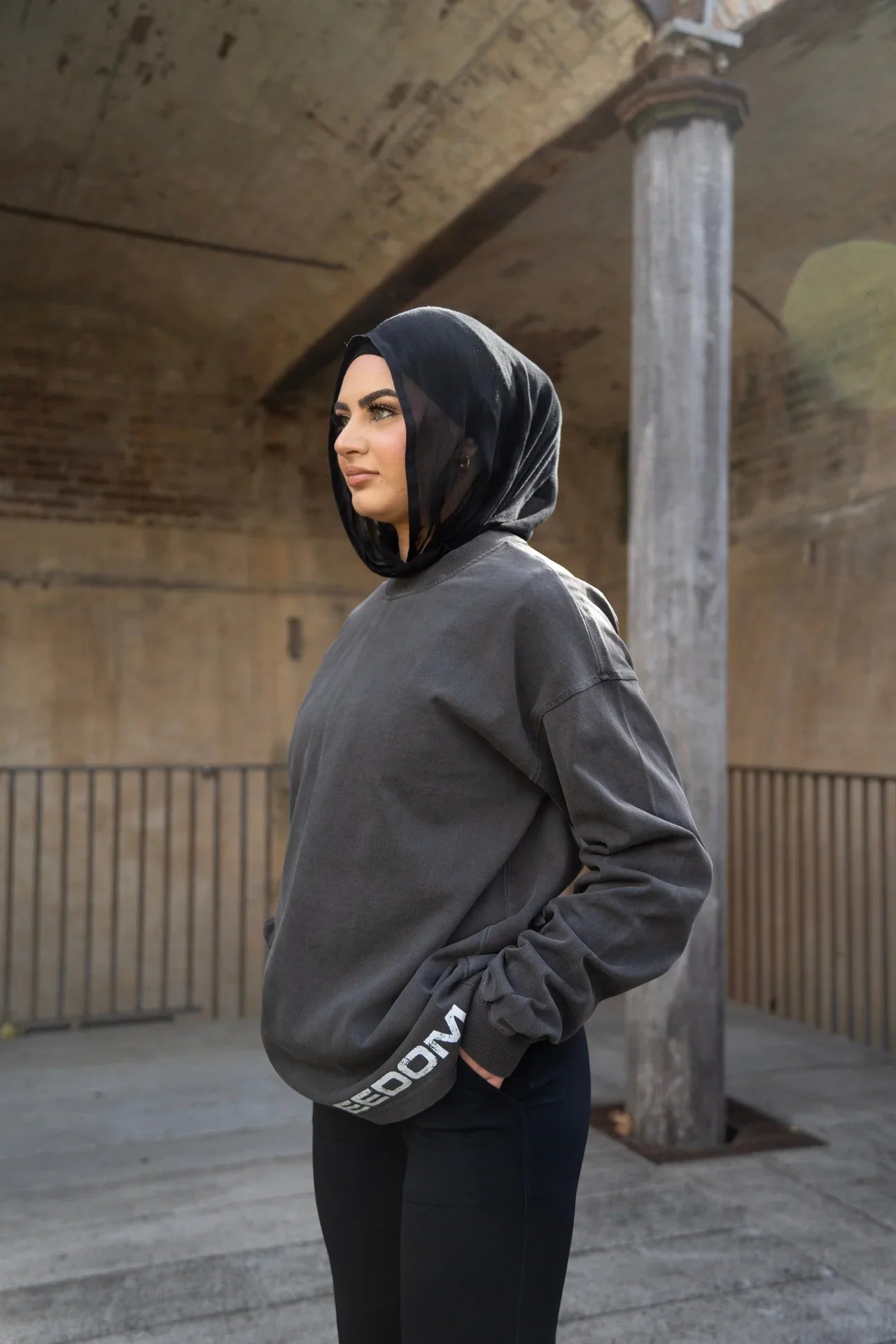Caring for Your Women’s Trench Coat in Humid Climates
When it comes to timeless outerwear, the women’s trench coat stands unmatched. Elegant, versatile, and effortlessly chic, it’s a wardrobe essential that never fades with changing fashion trends. Whether you’re heading to work, running errands, or exploring a new city, a good trench coat adds sophistication to every outfit.
But if you live in humid climates, you already know how challenging it can be to care for clothing — especially something as delicate yet structured as a trench coat. High humidity can lead to mildew, fabric damage, unpleasant odors, and even discolouration if proper care isn’t taken.
At Freedom Active Wear, we design trench coats with modern fabrics that combine style, durability, and performance — perfectly suited for women living in Australia’s unpredictable weather conditions. However, even the best materials deserve thoughtful care to ensure they stay in pristine condition for years.
This detailed guide will walk you through everything you need to know about caring for your trench coat in humid weather — from cleaning and storage tips to long-term maintenance strategies that protect your investment.

1. Understanding the Fabric of Your Trench Coat
Before diving into care techniques, it’s crucial to understand what your trench coat is made of. Traditional trench coats were crafted from cotton gabardine — a tightly woven, water-resistant fabric designed for protection and breathability. Modern versions, like those from Freedom Active Wear, often incorporate performance blends such as polyester, elastane, and cotton mixes.
These fabrics:
-
Resist moisture while remaining breathable
-
Retain their shape even in damp air
-
Offer flexibility and comfort for everyday movement
Each fabric type has unique characteristics, meaning your care routine should align with the material composition. Always start by checking the care label inside your coat before cleaning or storing it.
2. The Effects of Humidity on Trench Coats
Humidity is one of fashion’s biggest enemies — especially for outerwear. When your trench coat is constantly exposed to moisture in the air, the fabric begins to absorb water particles. Over time, this can lead to:
-
Mildew and mold growth if stored without proper ventilation
-
Wrinkling and misshaping due to fabric fibers expanding
-
Unpleasant odours from trapped moisture
-
Rust or tarnish on metal buttons and buckles
By understanding how humidity affects your garment, you can take proactive steps to preserve its appearance and quality.
3. Day-to-Day Care in Humid Weather
In humid climates, trench coat care starts with your daily routine. Here’s what you should do each time you wear and store your coat:
a. Hang It Properly
Never fold or crumple your trench coat. Instead, hang it on a broad, padded hanger to maintain shoulder shape. Avoid metal hangers that can rust or deform the fabric.
b. Air It Out After Wearing
After returning home, hang the coat in a well-ventilated area for at least an hour. This allows any trapped moisture or perspiration to evaporate before storage.
c. Keep It Away from Direct Sunlight
Sun exposure can cause fading and damage fabric coatings. If you’re drying your coat, always do so in the shade or indoors with good airflow.
d. Spot Clean Regularly
Humidity amplifies odours and stains. Use a damp cloth or gentle fabric cleaner to remove dirt and water spots promptly instead of letting them settle.

4. Washing Tips for Trench Coats
Proper cleaning keeps your trench coat fresh and mold-free. However, trench coats aren’t meant to be washed frequently — doing so can shorten their lifespan. Here’s the right way to clean them:
a. Machine Washing (Only if Permitted)
If your coat’s label says “machine washable”:
-
Use cold water and the gentle cycle.
-
Turn the coat inside out to protect the outer layer.
-
Use a mild detergent — no bleach or softeners.
-
Avoid wringing. Instead, gently press out excess water.
b. Hand Washing
For delicate or partially water-resistant trench coats:
-
Fill a basin with lukewarm water and a small amount of mild detergent.
-
Submerge the coat and gently agitate it.
-
Rinse thoroughly with cold water.
-
Press the coat gently to remove water, but never twist it.
c. Dry Cleaning
If your trench coat is made of wool blends, lined materials, or features special finishes, always opt for professional dry cleaning. Choose a reputable cleaner familiar with performance fabrics.
5. Drying Your Trench Coat the Right Way
Never use a tumble dryer for your trench coat. The heat can damage waterproof coatings, shrink the fabric, or cause seams to pucker.
Instead:
-
Lay it flat on a clean towel and reshape the collar and belt.
-
Air dry indoors with good ventilation.
-
Keep it away from heaters or direct sunlight.
Once dry, lightly steam to remove wrinkles — but avoid placing the steamer too close.
6. Dealing with Odours in Humid Climates
Humidity can make even clean clothes smell musty. To keep your trench coat fresh:
-
Use a fabric deodorizer spray made for outerwear.
-
Hang it near natural airflow — such as near a window or fan.
-
Place cedarwood or activated charcoal sachets in your wardrobe to absorb moisture and odours.
7. Long-Term Storage Tips
If you plan to store your trench coat for an extended period (for example, during the dry season), follow these tips:
-
Clean it first — never store a dirty garment.
-
Use a breathable garment bag, not plastic.
-
Add moisture absorbers like silica gel packs or cedar blocks.
-
Store it in a cool, dry, and dark place.
Avoid vacuum sealing, as trench coats need some airflow to preserve the fabric structure.

8. Ironing and Steaming Safely
Wrinkles are common in humid weather. To smooth them out:
-
Use a low-heat setting with steam.
-
Always place a cloth between the iron and coat to avoid direct contact.
-
For best results, use a handheld garment steamer, keeping it at least 15 cm away from the surface.
9. Maintaining the Water-Resistant Finish
Most trench coats have a water-repellent coating that can wear off over time. To restore it:
-
Use a fabric-safe waterproofing spray available at outdoor or fashion stores.
-
Apply it evenly on a clean, dry coat and let it dry naturally.
This simple step helps your trench coat repel rain and moisture even in sticky, humid air.
10. Preventing Mold and Mildew
Humidity and enclosed spaces are a breeding ground for mold. To avoid it:
-
Keep your coat dry before storage.
-
Use dehumidifiers or closet moisture absorbers.
-
Check your coat monthly for signs of mold spots or mustiness.
If you notice mold, mix one part vinegar with three parts water and gently dab the affected area. Air-dry completely afterward.
11. Handling Leather Trims or Belts
Some trench coats feature leather belts or detailing. Humidity can cause leather to crack or stiffen.
-
Wipe leather parts regularly with a dry cloth.
-
Condition them every few months with leather moisturizer.
-
Never store leather components in plastic.
12. Travel Care for Humid Destinations
If you’re traveling to tropical or coastal areas:
-
Carry a foldable garment bag.
-
Pack a small moisture absorber inside.
-
On arrival, remove and hang the coat immediately to release any travel wrinkles or dampness.
13. Why Proper Care Matters
Your trench coat isn’t just outerwear — it’s an investment in your personal style. Regular care ensures:
-
The fabric maintains its crisp texture and drape
-
The colour stays rich and even
-
The structure remains tailored and flattering
Taking 10 minutes after each wear can make the difference between a coat that lasts one season and one that lasts a decade.
14. Freedom Active Wear’s Approach to Durable Outerwear
At Freedom Active Wear, durability meets design. Every trench coat is thoughtfully constructed using breathable, performance-grade fabrics that resist humidity and adapt to Australia’s varied climates.
Each stitch and seam is reinforced for long-term use, and our neutral tones — especially classic black and sand — are chosen for timeless appeal. Designed for the modern woman, our trench coats pair beautifully with activewear, casual outfits, and office attire alike.
15. Expert Tip: Create a Routine
Build a 3-step habit:
-
Air out your coat after each wear.
-
Brush off dust weekly.
-
Deep clean or dry-clean once a season.
Consistency is the key to maintaining freshness, shape, and quality in humid weather.
Conclusion
Humidity may be a challenge, but it doesn’t have to shorten the life of your favourite trench coat. With a mindful care routine, breathable storage solutions, and attention to detail, your coat can stay beautiful, crisp, and ready for any occasion.
Your trench coat represents more than style — it’s confidence, sophistication, and resilience. With these tips, you can keep it looking flawless through every humid morning and rainy evening.
So the next time you slip into your Freedom Active Wear trench coat, you’ll feel not just the comfort of high-quality craftsmanship, but the confidence of knowing it’s built — and cared for — to last.
SEO Keywords Used Naturally:
women’s trench coat care, humid climates, Australian outerwear, how to clean trench coat, prevent mold on coats, trench coat maintenance, activewear outerwear, Freedom Active Wear Australia, breathable trench coats, women’s fashion maintenance, outerwear fabric care, storing coats in humidity.
FAQs – Caring for Your Women’s Trench Coat in Humid Climates
General Care
1. How do I protect my trench coat from humidity?
Store it in a cool, dry place with good airflow and use moisture absorbers like silica gel or cedar blocks.
2. Can I wear a trench coat in humid weather?
Yes. Lightweight, breathable trench coats made with performance fabrics are perfect for humid climates.
3. How often should I clean my trench coat?
Clean it once a season or whenever it gets visibly dirty. Overwashing can weaken the fabric.
4. Should I dry clean my trench coat?
Yes, especially if it’s made of wool, lined materials, or delicate fabric blends.
5. Is it safe to wash my trench coat in the washing machine?
Only if the care label allows it. Use a gentle cycle, cold water, and mild detergent.
Moisture and Mold Prevention
6. How do I prevent mold or mildew from forming?
Always air-dry your coat before storing it and keep it in a breathable garment bag.
7. What should I do if I find mold spots?
Gently dab the area with a mix of vinegar and water (1:3 ratio), then air-dry completely.
8. Can humidity cause my trench coat to smell?
Yes, high moisture levels can trap odors. Air out your coat after every wear.
9. How can I get rid of musty smells from my coat?
Hang it in fresh air or use a fabric-safe deodorizer spray for outerwear.
10. Is it okay to use a dehumidifier near my wardrobe?
Absolutely — it’s one of the best ways to prevent moisture buildup and mold growth.
Storage Tips
11. What’s the best way to store a trench coat in humid climates?
Use a padded hanger, keep it in a breathable fabric bag, and add moisture absorbers.
12. Can I use a plastic garment bag?
Avoid plastic — it traps humidity and can lead to mold or yellowing fabric.
13. Should I fold my trench coat?
No. Always hang it to maintain its shape and avoid wrinkles.
14. How do I store my trench coat long-term?
Clean it, dry it completely, store it in a cool area, and avoid sunlight exposure.
15. Can I vacuum-seal my trench coat?
No. Trench coats need air circulation to maintain fabric integrity.
Drying and Ironing
16. Can I tumble-dry my trench coat?
Never. The heat can damage fabric coatings and seams.
17. What’s the best drying method?
Lay flat or hang in a shaded, airy area. Avoid direct heat or sunlight.
18. Can I iron my trench coat?
Yes, but use low heat and place a cloth between the iron and fabric.
19. Is steaming safe for trench coats?
Yes, steaming is ideal for removing wrinkles. Keep the steamer about 15 cm away.
20. How do I reshape my coat after washing?
Gently adjust the collar, belt, and seams while it’s damp, then air-dry completely.
Odor and Freshness
21. How do I keep my trench coat smelling fresh?
Air it regularly and store it with natural odor absorbers like cedar or lavender.
22. Can I spray perfume on my coat?
Avoid direct perfume sprays; they can stain or affect waterproof finishes.
23. What if my coat still smells after cleaning?
Hang it outside or in a well-ventilated area for 24 hours to neutralize lingering odors.
24. Do humidity and sweat affect fabric smell?
Yes, they can trap body oils and create mustiness — regular airing helps prevent this.
25. Are there eco-friendly ways to freshen my coat?
Yes — sprinkle baking soda inside the lining for a few hours, then brush it off.
Water Resistance & Fabric Care
26. How do I maintain the water-resistant layer?
Reapply a waterproofing spray every few months, especially after washing.
27. Can I use regular waterproof spray?
Only use sprays designed for clothing or performance fabrics.
28. What if my coat loses its water repellence?
Clean it first, then reproof it with a fabric-safe waterproof coating.
29. Does humidity damage water-repellent coatings?
Over time, yes — that’s why reapplication is essential for longevity.
30. Can I iron over waterproofed fabric?
Avoid direct contact; use a protective cloth to prevent heat damage.
Leather & Metal Details
31. How do I care for leather belts or trims?
Wipe them with a dry cloth and condition occasionally with leather cream.
32. Can humidity ruin leather details?
Yes. Keep them dry and away from enclosed, damp spaces.
33. How do I prevent rust on metal buttons or buckles?
Dry your coat completely before storage and occasionally polish the hardware.
34. What should I do if metal parts start to tarnish?
Use a soft cloth to buff them gently; avoid harsh cleaners.
35. Is it safe to remove detachable parts before washing?
Yes — always detach belts or trims before washing or dry cleaning.
Styling & Longevity
36. How long can a trench coat last with proper care?
A well-maintained trench coat can easily last 5–10 years or more.
37. Can I wear my trench coat every season?
Yes, trench coats are perfect for layering year-round — especially lightweight ones.
38. Do neutral colors help with maintenance?
Absolutely. Neutral tones like black, beige, and tan hide wear and stains better.
39. What makes Freedom Active Wear trench coats ideal for humid climates?
They’re crafted with breathable, moisture-resistant performance fabrics built for Australian conditions.
40. Why is caring for a trench coat so important?
Because consistent care preserves shape, colour, and quality — keeping it elegant for years.
✅ SEO Keywords integrated naturally:
trench coat care, humid climates, women’s outerwear maintenance, mold prevention, trench coat cleaning tips, Freedom Active Wear Australia, how to store coats, dry clean trench coat, breathable outerwear, odor-free clothing storage.


